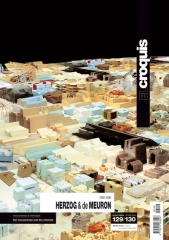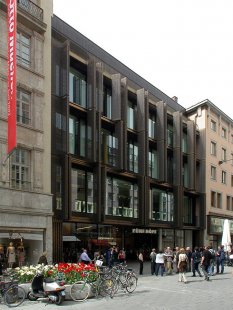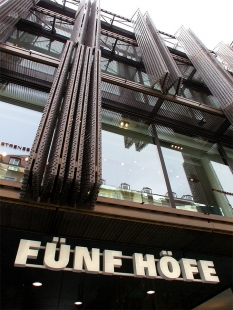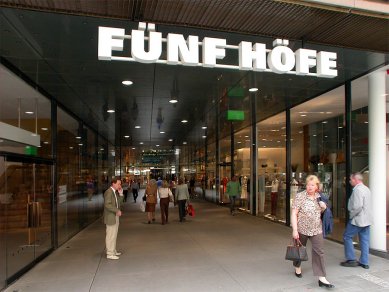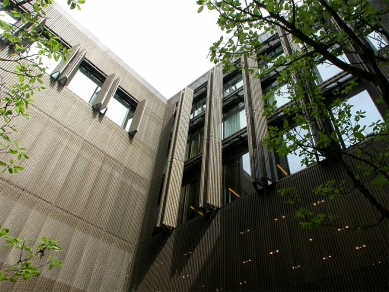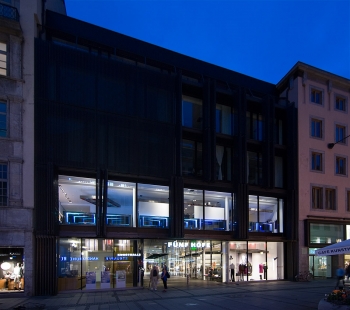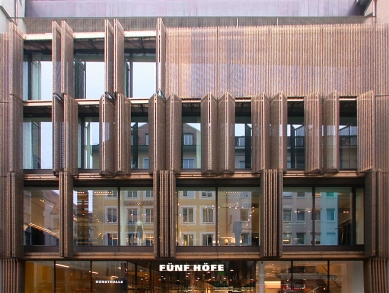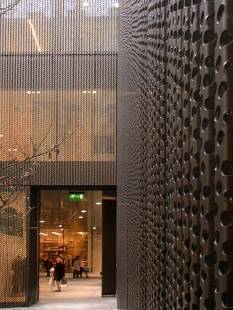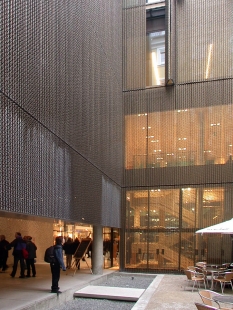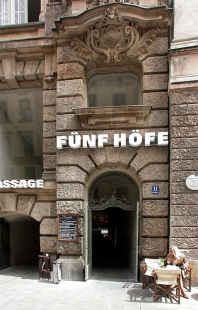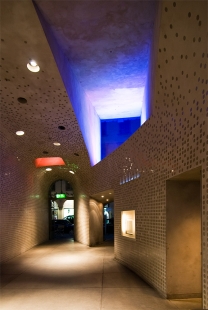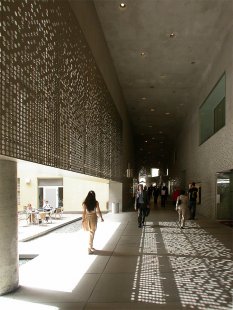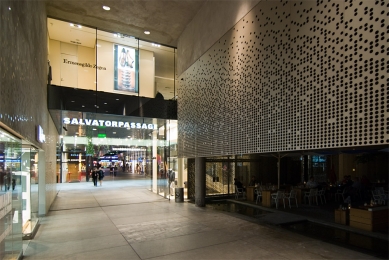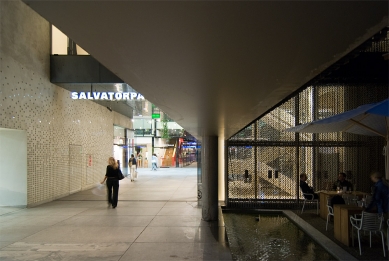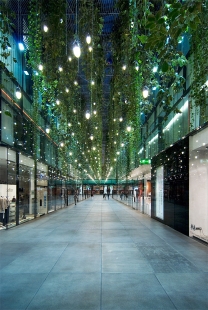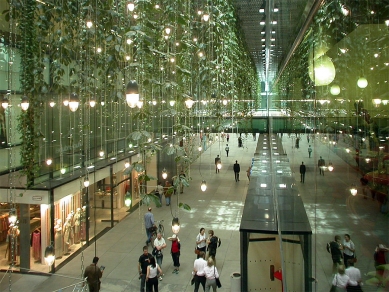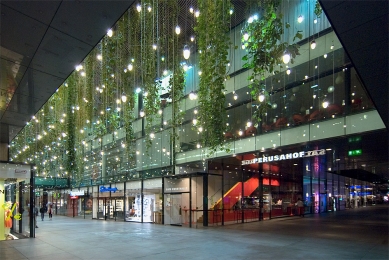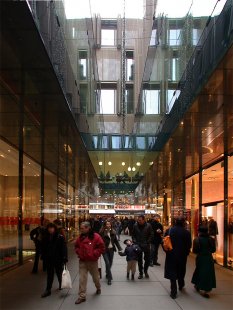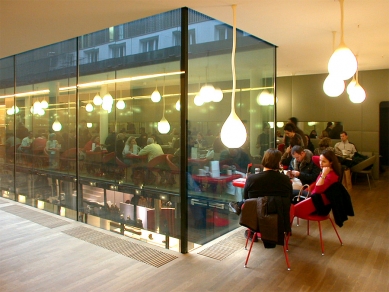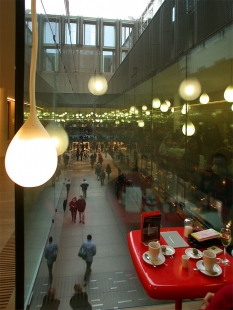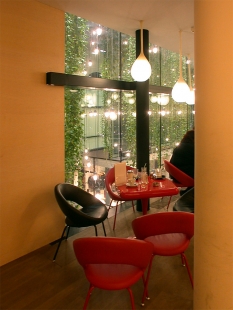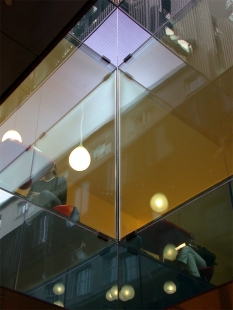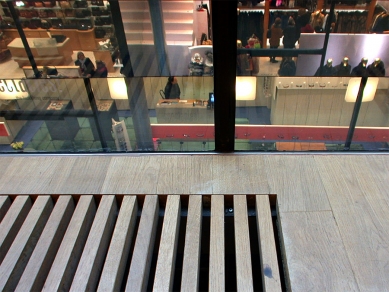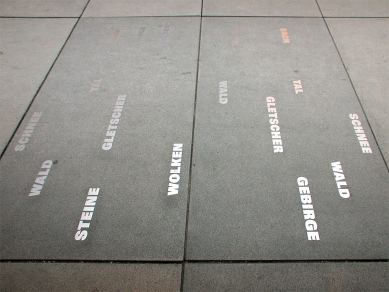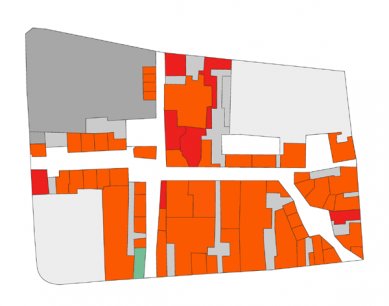
Five Courtyards

The Courtyard [masculine - die Höfe, in German - courtyard]
[1] A space behind a house or between two buildings. Often used to extend living area. The inner courtyard is an important element of urban life; [2] A residence of the nobility, a podium of power and social life. It is also a place of scholarly life.
On March 20, after four years, one of the largest construction projects within the urban core in Germany was ceremoniously completed. The "Fünf Höfe" complex is located in Kreuzviertel, a district known since the 14th century. This district was bounded on the east by the streets of Wein- and Theatinerstrasse, to the south by Kaufinger- and Neuhauserstrasse at the corner between the gates of the former city walls Schwebinger Tor and Neuhauser ("Karls") Tor. The name "Kreuzviertel" was derived from the old church Kreuzkirche or possibly from the alley Kreuzgasse, which was located at what is now Promenadenplatz. Compared to other parts of the city, Kreuzviertel has always had a unique structure. In the Middle Ages, craftsmen lived here, but they were significantly fewer than in the other three city districts. Predominantly, church societies such as the Jesuits, Augustinians, and Carmelites, as well as a cemetery, hospital, and others resided here.
Recently, the question of whether the urbanity of a place can be acquired or even constructed has become a fashionable topic. The solution of the Five Courtyards demonstrates one way to strengthen the multi-layered heart of the metropolis: through a "city within a city" with pathways and courtyards, through a neighborhood of shops, restaurants, offices, and apartments. The area has been enriched by the construction of a cultural center and architecture that quotes history with modern means. Only those European cities that do not fossilize and do not deny new construction of quality streets and squares do I find pleasant.
Maffeihof is named after Maffeistrasse, which it leads into. This street was named in honor of Joseph Anton von Maffei (1790 - 1870), a famous resident of Munich, who was not only the founder of a locomotive factory in Hirschau but also a co-founder of the Bavarian Mortgage Bank.
Prannerpassage leads to Prannerstraße, although it was originally named after "Prannersgassen." This was the name given to several streets in Munich before the 19th century (today's Prannerstrasse, Promenadestrasse, which was renamed in 1952 to Kardinal-Faulhaber-Strasse, then the western parts of Salvatorstrasse and Promenadeplatz). For distinction, they were named Rear, Front, Middle, and Upper Prannersgassen. The name is derived from the Prandan family (Präntel or Brandl) from Hochmating, who settled here in the 14th century.
Perusahof is named due to its proximity to Perusastrasse, which was named after the owners of the house at Theatinerstrasse 45 (on the southern corner of Perusastrasse), the noble family de la Peruse, who had this house, originally part of the church of Scheyern, as their residence from 1711-70.
Salvatorpassage understandably did not get its name from the well-known Paulaner brewery beer, but rather from the presence of Salvatorplatz and Salvatorstrasse. The name was used for the cemetery chapel of Saint Salvator, which today serves Greek Orthodox services. The cemetery that once lay here currently belongs to the parish of "Unser Lieben Frau" of today’s Frauenkirche.
Viscardihof leads towards Viscardigasse. Known to locals as "Drückebergergässchen" from the time of Hitler. When one walks through this alley, they cannot help but feel the Nazi salute of the patrolling guard. The alley was named after Giovanni Antonio Viscardi (1645 - 1713) - the chief court and state master builder. He created plans for, among others, the Trinity Church, a civic hall, side buildings of Nymphenburg Palace, and also directed the construction of the Theatinerkirche.
Data: 16,600 m² of retail space, 2,560 m² of exhibition space, 24,000 m² of office space, 27 apartments.
On March 20, after four years, one of the largest construction projects within the urban core in Germany was ceremoniously completed. The "Fünf Höfe" complex is located in Kreuzviertel, a district known since the 14th century. This district was bounded on the east by the streets of Wein- and Theatinerstrasse, to the south by Kaufinger- and Neuhauserstrasse at the corner between the gates of the former city walls Schwebinger Tor and Neuhauser ("Karls") Tor. The name "Kreuzviertel" was derived from the old church Kreuzkirche or possibly from the alley Kreuzgasse, which was located at what is now Promenadenplatz. Compared to other parts of the city, Kreuzviertel has always had a unique structure. In the Middle Ages, craftsmen lived here, but they were significantly fewer than in the other three city districts. Predominantly, church societies such as the Jesuits, Augustinians, and Carmelites, as well as a cemetery, hospital, and others resided here.
Recently, the question of whether the urbanity of a place can be acquired or even constructed has become a fashionable topic. The solution of the Five Courtyards demonstrates one way to strengthen the multi-layered heart of the metropolis: through a "city within a city" with pathways and courtyards, through a neighborhood of shops, restaurants, offices, and apartments. The area has been enriched by the construction of a cultural center and architecture that quotes history with modern means. Only those European cities that do not fossilize and do not deny new construction of quality streets and squares do I find pleasant.
Maffeihof is named after Maffeistrasse, which it leads into. This street was named in honor of Joseph Anton von Maffei (1790 - 1870), a famous resident of Munich, who was not only the founder of a locomotive factory in Hirschau but also a co-founder of the Bavarian Mortgage Bank.
Prannerpassage leads to Prannerstraße, although it was originally named after "Prannersgassen." This was the name given to several streets in Munich before the 19th century (today's Prannerstrasse, Promenadestrasse, which was renamed in 1952 to Kardinal-Faulhaber-Strasse, then the western parts of Salvatorstrasse and Promenadeplatz). For distinction, they were named Rear, Front, Middle, and Upper Prannersgassen. The name is derived from the Prandan family (Präntel or Brandl) from Hochmating, who settled here in the 14th century.
Perusahof is named due to its proximity to Perusastrasse, which was named after the owners of the house at Theatinerstrasse 45 (on the southern corner of Perusastrasse), the noble family de la Peruse, who had this house, originally part of the church of Scheyern, as their residence from 1711-70.
Salvatorpassage understandably did not get its name from the well-known Paulaner brewery beer, but rather from the presence of Salvatorplatz and Salvatorstrasse. The name was used for the cemetery chapel of Saint Salvator, which today serves Greek Orthodox services. The cemetery that once lay here currently belongs to the parish of "Unser Lieben Frau" of today’s Frauenkirche.
Viscardihof leads towards Viscardigasse. Known to locals as "Drückebergergässchen" from the time of Hitler. When one walks through this alley, they cannot help but feel the Nazi salute of the patrolling guard. The alley was named after Giovanni Antonio Viscardi (1645 - 1713) - the chief court and state master builder. He created plans for, among others, the Trinity Church, a civic hall, side buildings of Nymphenburg Palace, and also directed the construction of the Theatinerkirche.
Data: 16,600 m² of retail space, 2,560 m² of exhibition space, 24,000 m² of office space, 27 apartments.
The English translation is powered by AI tool. Switch to Czech to view the original text source.
0 comments
add comment


